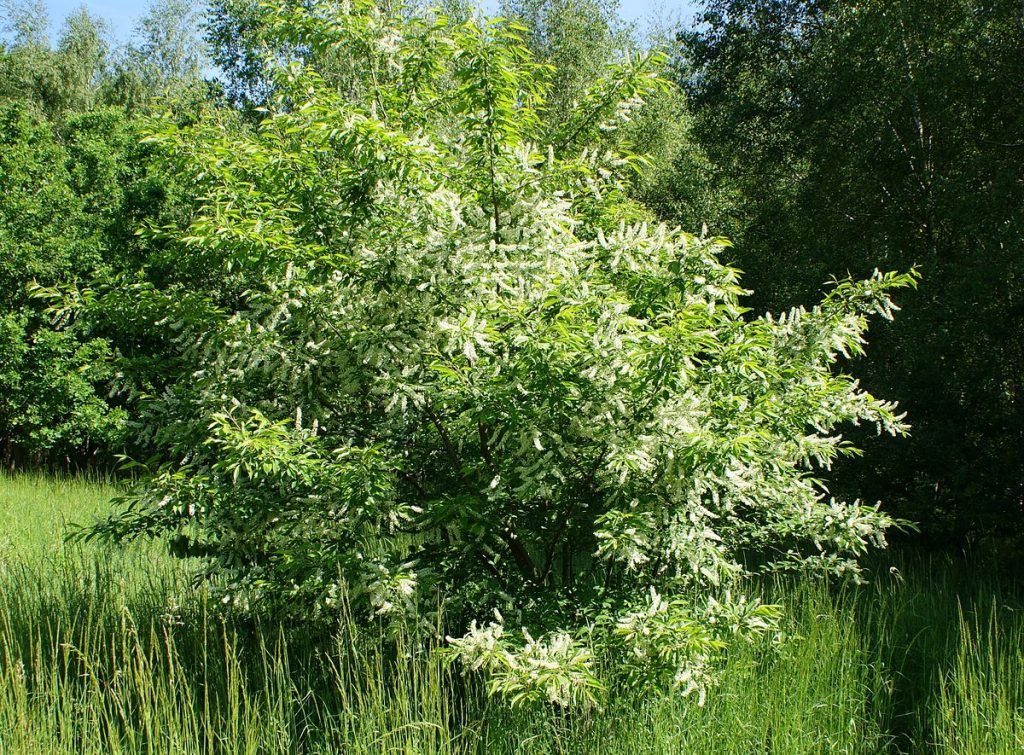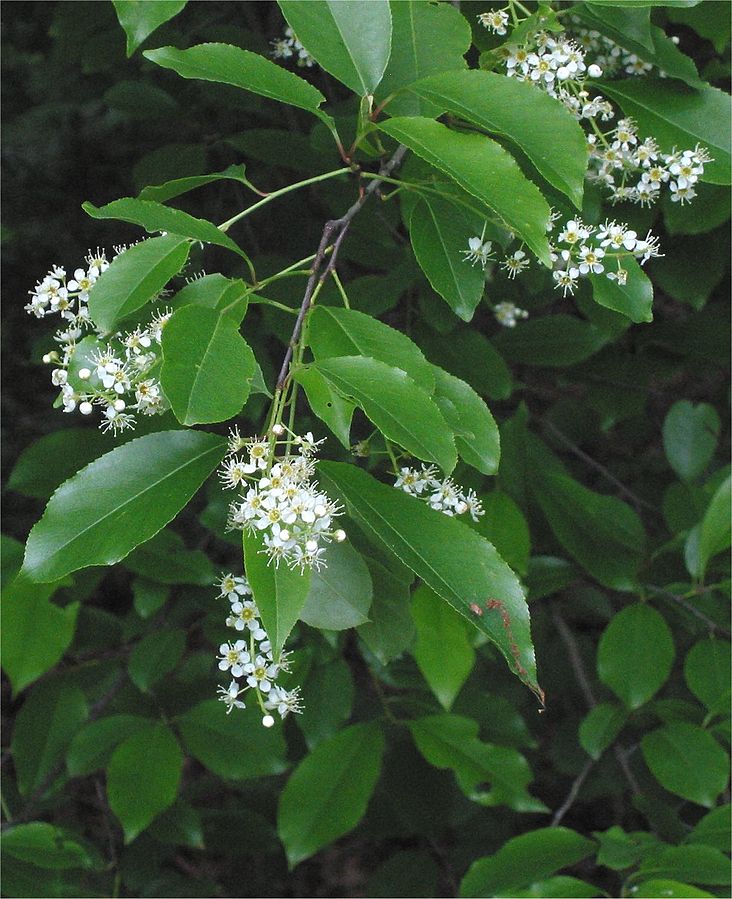
Also called rum cherry, and mountain black cherry, this deciduous tree is native to eastern North America, Pacific Northwest, Mexico, and Central America. It is a member of the rose family, Rosaceae, and is more closely related to chokecherry than to sweet or sour cherry. The tree grows up to 80′ tall and has a deep taproot, and shiny grayish brown bark with vertical lenticels when young, and dark brown scaly or flaky bark when mature. The alternate, glossy, dark green leaves are 3-6″ long, and oblong-ovate to lanceolate. They have finely toothed margins, inconspicuous glands on the petiole near the blade, and fine yellow-brown hairs on the underside. In fall they turn yellow-orange to rose. Three to six inch long pendulous racemes appear in the spring with the foliage bearing 20-60 fragrant flowers that are about 1/3″ across and have 5 white, round petals and a reddish orange center consisting of a ring of yellow tipped stamens around a single central style. Drooping clusters of shiny, round dark reddish purple to almost-black fruits follow. They are 1/3″ across and contain a single hard seed. The plant is a larval host for several species of butterfly, the foliage is browsed by deer, and the flowers provide nectar for pollinators. Although the fruits are bitter, they are eaten by birds, deer and small mammals, can be made into jams and jellies, and are used to flavor certain liquors. The inner bark is used in cough syrups, sedatives, and tonics and the wood, known for its quality and beauty, is used for a variety of items including furniture, veneer, gun stocks, tool handles and musical instruments. The bark, stem, and leaves contain toxic cyanogenic compounds that account for the bitter almond aroma of the inner bark and crushed foliage. The tree is considered toxic to humans, pets, and livestock. The genus name, Prunus, is the Latin word meaning plum, one member of this genus. The specific epithet, serotina, comes from the Latin word sērus, meaning late, and refers to the late flowering and fruiting of this cherry in comparison to other cherries. Photo Credit Krzysztof Ziarnek, Kenraiz Wikimedia Commons

Type: Deciduous tree
Outstanding Feature: Flowers, fall color, high quality timber
Form: Conical/pyramidal
Growth Rate: Rapid
Bloom: Racemes of 20-60 fragrant, small, white flowers in spring
Size: 50-80′ H x 30-60′ W
Light: Full sun to part shade
Soil: Fertile, moderately moist, well-drained
Hardiness: Zones 3-9
Care: Trees are messy and the leaves, twigs and branches are toxic so should be cleaned up to prevent poisoning of children, pets, and other plant-eating animals.
Pests and Diseases: Susceptible to damage due to leaf spot, die back, leaf curl, powdery mildew, root rot, fireblight, aphids, scale, borers, leafhoppers, caterpillars, tent caterpillars, Japanese beetles and spider mites
Propagation: Seed (benefits from scarification and/or cold stratification), hardwood, semi-hardwood (best) and softwood cuttings, root cuttings
Outstanding Selections: None
Photo Credit: Amerikaanse vogelkers Wikipedia